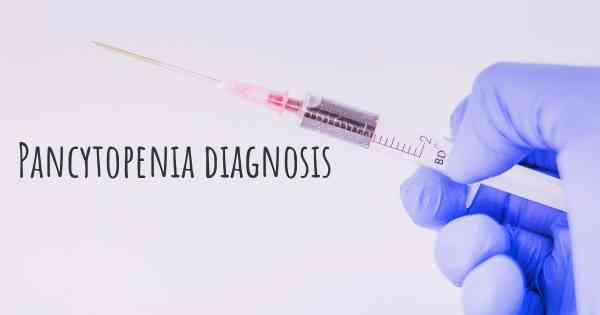How is Pancytopenia diagnosed?
See how Pancytopenia is diagnosed. Which specialists are essential to meet, what tests are needed and other useful information for the diagnosis of Pancytopenia

Pancytopenia is a medical condition characterized by a decrease in the number of all three major blood cell types: red blood cells, white blood cells, and platelets. It can be caused by various underlying conditions, such as bone marrow disorders, infections, autoimmune diseases, nutritional deficiencies, or certain medications.
Diagnosing pancytopenia involves a comprehensive evaluation of the patient's medical history, physical examination, and laboratory tests. The process typically includes the following:
- Medical history: The doctor will inquire about the patient's symptoms, their onset, duration, and any factors that may have triggered them. They will also ask about any previous medical conditions, family history, and exposure to toxins or medications.
- Physical examination: The doctor will perform a thorough physical examination to check for signs of anemia, infections, or other potential causes of pancytopenia. They may examine the skin, lymph nodes, spleen, and liver.
- Complete blood count (CBC): This is a crucial test that measures the levels of red blood cells, white blood cells, and platelets in the blood. A low count in all three cell types is indicative of pancytopenia. The CBC also provides information about the size, shape, and characteristics of the blood cells.
- Bone marrow aspiration and biopsy: This procedure involves extracting a small sample of bone marrow from the hipbone or sternum. It is performed under local anesthesia. The sample is then examined under a microscope to assess the production and maturation of blood cells. This test helps determine if the cause of pancytopenia lies within the bone marrow.
- Additional tests: Depending on the suspected cause, additional tests may be conducted. These can include genetic tests, blood chemistry tests, viral or bacterial cultures, immunological tests, or imaging studies.
Once a diagnosis of pancytopenia is confirmed, further investigations may be necessary to identify the underlying cause. Treatment options will depend on the specific cause and may involve medications, blood transfusions, bone marrow transplantation, or addressing any nutritional deficiencies.








